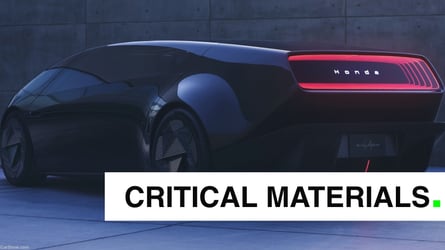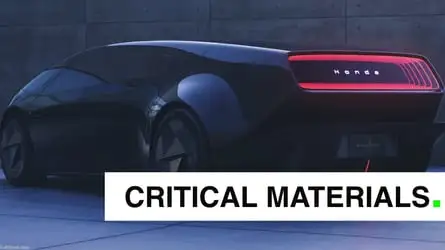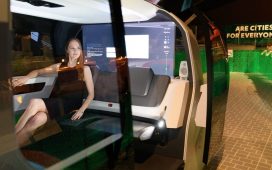Plus, Elon Musk changes his tune on Tesla Supercharging after laying everyone off, and one of Geely’s brands makes its Wall Street debut.


May 10, 2024 at 9:42am ET
It’s no secret at this point that the Japanese automakers are pretty behind in the electric vehicle race. But even as more and more of their Western competitors seem to waffle on phasing out internal combustion, Japan Inc.’s car brands aren’t sitting still. (Well, some of them aren’t, anyway.) Today we’re going to look at Honda, which now seems to be really shoring things up for a battery-centric future starting at the end of the next decade
Also on today’s Friday edition of Critical Materials: Tesla CEO Elon Musk does some waffling of his own on Supercharger spending, and another EV competitor from China gets its day at the New York Stock Exchange. Let’s go.
30%: Honda To Increase R&D Spending, Vertical Integration For EV Future
As I’ve said before, you shouldn’t count out Toyota—the world’s biggest automaker by volume and a massively profitable one—in the EV race. At the same time, Toyota likes to hedge its bets, hyping up its hybrids and refusing to abandon its hydrogen plans. Then you have Nissan, which often suffers from a terminal case of being Nissan; Mazda, which feels rather asleep at the wheel; and Subaru, which to me feels permanently stuck in the previous decade.
So where does that leave Honda, the engineer-led firm that’s always the small and scrappy one? Can it punch above its weight class on the EV front? It certainly sounds like it’s making moves to get there. After all, even if the rate of EV adoption is slowing in some places, it isn’t in China, and the market is clearly moving in the electrified direction.
At Honda’s annual financial meeting today in Japan, CEO Toshihiro Mibe announced the long-term plan: bring more and more things in-house, where Honda has direct control. That’s a very Tesla-esque play, once born out of necessity because few suppliers even made the parts it needed for the EVs it wanted.
Unlike the old days of automaking, where so many parts and systems were outsourced to countless different supplier companies, vertical integration allows car companies to move far more quickly on multiple fronts. But getting the point where automakers can do that is no small task.
Here’s Automotive News to explain:
“We changed our strategy a little bit in terms of electrification, especially batteries,” Mibe said. “We are shifting to a vertical-type system to sustain a total electrification business. To do that, we must internalize these technologies. The software too must also be supported by Honda itself.”
Mibe said Honda would give more details of the strategy on Thursday in an annual business update.
The strategy is a throwback to the earliest days of the auto industry when Ford Motor Co. tried to make everything from rubber to glass under its own umbrella. The approach is seeing a resurgence with its adaption to EVs by emerging players from China such as the EV heavyweight BYD. BYD has been able to control cost and technology by organizing its own supply chain vertically.
In Europe, Renault Group, Volvo and Stellantis are among the automakers that have brought production of electric motors and batteries in-house.
This fiscal year, it budgeted record spending on R&D at 1.19 trillion yen ($7.65 billion), a 23 percent increase over the previous year.
Recall also that Honda is building up huge battery and EV development operations in Ohio and Canada as well, so it’s definitely laying the groundwork right now.
In the meantime, Honda’s rolling out more hybrids, which can be sold for higher profit margins that will hopefully power this all-electric future. “If we can do this, we will have more power to generate cash and charge the transition to electrification,” Mibe said, according to the story.
Honda’s goal is to phase out internal combustion entirely, which may be a more “realistic” goal than the 2030 to 2035 targets many automakers are now retreating from. Honda is also set to unveil a next-generation EV platform in 2026, previewed by the controversial 0 Series designs seen at CES this year. In the meantime, Honda at least has tailwinds from a record-breaking year of operating profits in 2023 at 1.38 trillion yen ($8.87 billion.)
Can Honda succeed in this race? It certainly doesn’t want to depend on General Motors forever.
60%: Musk Promises Supercharger Growth, Despite Layoffs
What a wild couple of weeks it’s been at Tesla. The electric automaker has seen so many waves of layoffs that Optimus may be the only thing on two legs actually getting things done. The most surprising cuts have been to most, if not all, of Tesla’s Supercharging team, tasked with growing and maintaining its acclaimed charging network.
Cutting back on charging has been a particularly controversial move. No wonder, then, that Musk seemed to be attempting some rare damage control on X early this morning:
Exactly how it will do this, and do it well, without nearly all of the team working on it before, is unclear. But what is clear is that Tesla’s retreat has left some prime DC fast charging-ready real estate up for grabs, and everyone from new startups to oil giants like BP have plans to snatch it up.
90%: Geely’s Zeekr, Outpacing Telsa In China, Makes Its NYSE Debut
If you’re in New York and you happen to swing by the Financial District, you may see some unfamiliar-looking electric cars parked outside. That’s because Zeekr—a Geely Group EV brand we’ve covered pretty extensively here—is having its New York Stock Exchange debut today. Here’s CNBC with the financial angle:
The company will sell 21 million American depository shares to raise $441 million when it begins trading on the New York Stock Exchange on Friday under the ticker ZK. The offering sits at the top of Zeekr’s expected range of $18 to $21 a share, revealed in an F-1 filing with the Securities and Exchange Commission earlier this month.
Zeekr, which is backed by Chinese-based automotive group Geely, offers several luxury vehicle models, including an upscale sedan it began delivering in January. Geely will have more than 50% of the company’s voting power after the IPO is complete.
“Through developing and offering next-generation premium BEVs and technology-driven solutions, we aspire to lead the electrification, intelligentization and innovation of the automobile industry,” the company said in its SEC filing.
Is “intelligentization” a word now? Nobody ever tells me anything.
Anyway, the last time Geely took a new EV brand public, the end result didn’t go all that spectacularly. Polestar went public with a special purpose acquisition company (SPAC) in 2022, but like most SPAC deals, it has since seen its value plummet; hampered also by slowing EV sales and only having one model on sale for the longest time, Polestar (PSNYW) is now trading at a meager 15 cents per share. Not great.
But Zeekr may be a different story. It’s already got a pretty extensive lineup in China, its tech and design game seems first-rate, it’s already expanding into Europe and Mexico, and doesn’t seem to be completely ruling out the United States. And on its home turf, Zeekr is already outpacing Tesla sales in some areas.
Our man Kevin Williams, who’s been nailing the China beat as of late, is at the NYSE as I write this for Zeekr’s big debut. Expect more from that event soon.
100%: What Do You Want To See From An Electric Honda?
Yeah, I’m not sold on those crazy designs we saw at CES, but few people seem to be. In any case, it’d be hard to argue against a well-executed electric Accord or Civic or CR-V, if those products are done right. What do you hope Honda achieves as it moves in that direction?
Contact the author: patrick.george@insideevs.com
Read more











